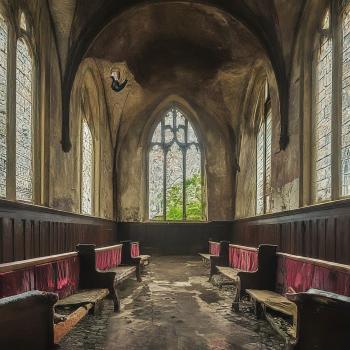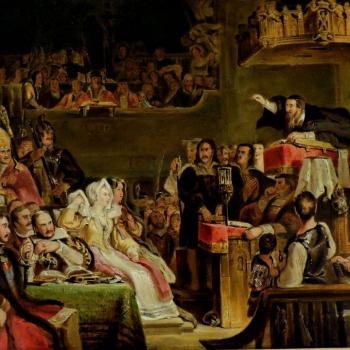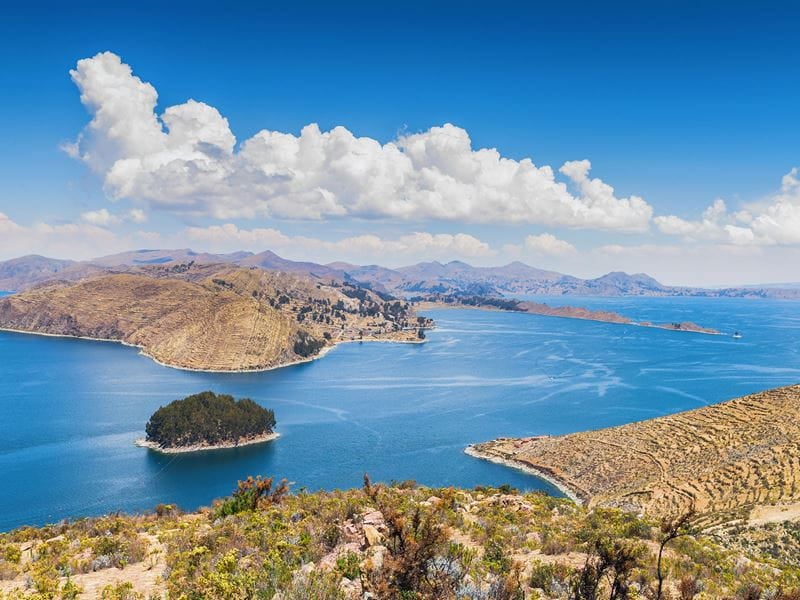
- Trending:
- Olympics
- |
- Forgiveness
- |
- Resurrection
- |
- Joy
- |
- Afterlife
- |
- Trump
The 100 Most Holy Places On Earth
Lake Titicaca

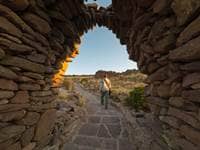

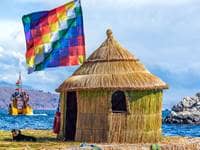
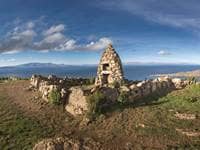
Associated Faiths:
Incan
While this site is only officially sacred among the Incan (or indigenous peoples), it provokes awe in most who visit—though most visitors do not come for religious reasons but, instead, for the purpose of tourism.
Accessibility:
Open to visitors.
Annual Visitors: 4,500,000
History
Lake Titicaca is the highest navigable lake in all of South America—and is said to be the world’s largest mountain lake, covering 3,200 square miles. It is 118 miles long, 50 miles wide, and nearly 1,000 feet deep. Lodged between the Altiplano plateau of Peru and the Andes, Lake Titicaca rests at an elevation of almost 12,500 feet.
For centuries, there have been legends, tall tales, of hidden cities beneath the surface of the lake. Much like stories of sightings of the Loch Ness Monster, local fishermen and divers alike swear that they have located a submerged city. Owing to the ridiculous number of such claims, in 1967 and again in 2000, the Bolivian government authorized scientific expeditions to see if any of these wild stories were true. Much to the satisfaction of the locals, the researchers discovered numerous totally submerged stone buildings, including finely cut stone-paved paths, and a 660 ft. by 160 ft. stone temple. While researchers still have questions about who actually built and inhabited this now submerged city, they have suggested that it may actually be pre-Incan (which would place it pre-15th century CE)—though this is debated.
Regardless of who built the submerged city, Lake Titicaca has been reverenced as a “sacred site” by the indigenous people of South America since before the Incas inhabited the area. Within the massive lake are several islands. Each are associated with various Incan gods and various planets as well. Thus, there is a large and developed lore surrounding the lake, including a belief that a supremely important Incan deity (Inti, son of the Creator Sun god, Viracocha) lives on one of those islands.
Religious Significance
While it is hard to say what the pre-Incan people understood about the religious significance of Lake Titicaca, scholars seem convinced that those pre-Incan primitives did indeed believe it to be holy. Situated only 13 miles from Lake Titicaca is Tiahuanaco (a 3rd century CE pilgrimage site with a temple, statues, and evidence of human sacrifice). Most believe that the lake and the now abandoned temple were connected and utilized as places of pilgrimage more than 1,000 years before the Incas inhabited the region.
For the Inca, Lake Titicaca is sacred because their creator deity, Viracocha, emerged from the Lake and then traveled to Tiahuanaco to create the first human beings. According to one version of the legend, this Sun god (Viracocha) sent his son (Inti) and one of his daughters (Mama Killa or Pachamama) to the island with the mission of civilizing human beings because they were living like untamed animals. These deities taught men to farm and women to weave clothing—and transitioned the first creatures from sub-human to more civilized beings.
The several islands within Lake Titicaca are also deemed sacred, in part because they were used to create the “celestial beings” that would ultimately give light to the earth (namely the sun, moon, and stars). For example, the largest of the isles—Isla del Sol (or Island of the Sun)—is believed to be the home of the “supreme” Inca god, Inti (who is the son of Viracocha). On that island is a stone which is reverenced, as it is believed to be the site where creation began. On the Island of the Moon (Isla del Luna), the goddess Mama Quila resides. She is the wife and sister of Inti. On her isle are a number of ruins, including what used to be an Incan nunnery—on the isle’s eastern shore. The Island of Taquile is said to have been the residence of the very last purebred tribe of Inca. Isla Amantaní (the Island of the Kanuta flower) is associated with the creation of the stars within the heavens. Three other islands in the lake, Suriqui, Pariti, and Quebraya, are worth noting. The first two are commercialized, and the latter of the three contains pre-Incan tombs (or chulpas) along its shores.
While the lore associated with this lake and its peoples date back to as early as 300 CE, much of its history is lost—leaving scholars to guess as to what went on at the lake and in nearby Tiahuanaco. Though the Inca people were certainly not the first to inhabit the area nor the only people to hold it as sacred, over time a tradition developed among them (which sounds reminiscent of Shinto belief) that the Inca were created at Lake Titicaca. Since they were created at the “Island of the Sun” and by the Sun god, by definition, this makes them the center of humanity, the primary creation of God, and literal descendants of the gods. Even the founder-king of the Inca (Manco Cápac) is said to have been created by the Sun god. For that reason, just as the Islands of Japan are sacred to practitioners of Shinto, Lake Titicaca and its islands and people are sacred to those who embrace the legends told about their origins.








